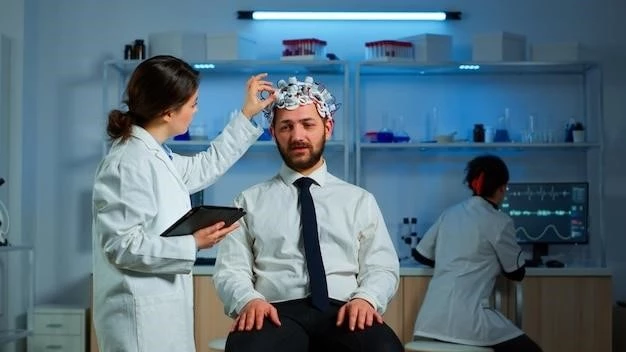Overview of Post-Traumatic Epilepsy
Post-traumatic epilepsy (PTE) is a serious consequence of a traumatic brain injury (TBI), accounting for a significant portion of acquired epilepsy cases. It is essential to be aware of the risks and impact of PTE.
Definition and Prevalence
Post-traumatic epilepsy (PTE) is a serious and disabling delayed consequence of a traumatic brain injury (TBI). It is one of the most common types of acquired epilepsies, accounting for about 20% of all epilepsy cases in the general population. Understanding the definition and prevalence of PTE is crucial in recognizing and addressing this condition effectively.

Risk Factors for Post-Traumatic Epilepsy
Post-traumatic seizures, brain injury severity, and intracerebral hemorrhage are significant risk factors for developing post-traumatic epilepsy. It is crucial to understand these factors and their impact.
Types of Traumatic Brain Injuries
There are various types of traumatic brain injuries (TBI) that can lead to post-traumatic epilepsy (PTE). Understanding the nature of these brain injuries, such as intracerebral hemorrhage, subdural hematomas, and brain injury severity, is crucial in assessing the risk factors associated with PTE. Recognizing the different types of TBIs can aid in early identification and management of potential post-traumatic epilepsy.
Diagnosis and Evaluation
Diagnosing post-traumatic epilepsy involves identifying seizures after traumatic brain injury. Evaluation includes monitoring symptoms, conducting neurological exams, and utilizing imaging tests to assess brain activity. Prompt diagnosis is key to effective management.
Differentiating Post-Traumatic Seizures from Epilepsy
It is crucial to differentiate between post-traumatic seizures, which are immediate responses to head trauma, and post-traumatic epilepsy, which refers to recurrent seizures that occur weeks after the injury. Understanding the distinction is vital for appropriate treatment and management strategies.
Treatment Strategies for Post-Traumatic Epilepsy
Antiseizure medications play a vital role in managing post-traumatic epilepsy. Monitoring and adjusting medications as necessary can help control seizures effectively and improve the quality of life for individuals with PTE.
Role of Antiseizure Medications
Antiseizure medications play a crucial role in managing post-traumatic epilepsy by helping control seizures. It is essential to follow a prescribed medication regimen to effectively manage and reduce the frequency of seizures.

Prognosis and Management
Long-term cognitive function and quality of life can be affected by post-traumatic epilepsy. Early diagnosis, adherence to treatment, and regular monitoring are crucial for effective management and improved outcomes.
Long-Term Impact on Cognitive Function
Post-traumatic epilepsy can have a lasting impact on cognitive function, affecting memory, attention, and overall mental abilities. Monitoring cognitive function and implementing appropriate management strategies are essential to mitigate these long-term effects.
Research and Future Directions
Studies on the association between post-traumatic epilepsy and dementia are ongoing, exploring the long-term cognitive impacts and potential management strategies. Keeping up with research developments in this area is vital for improving patient outcomes.
Studies on the Association Between Post-Traumatic Epilepsy and Dementia
Research on the association between post-traumatic epilepsy (PTE) and dementia is ongoing, investigating the potential long-term cognitive impacts. Understanding this relationship can lead to improved management strategies for individuals affected by both conditions.
